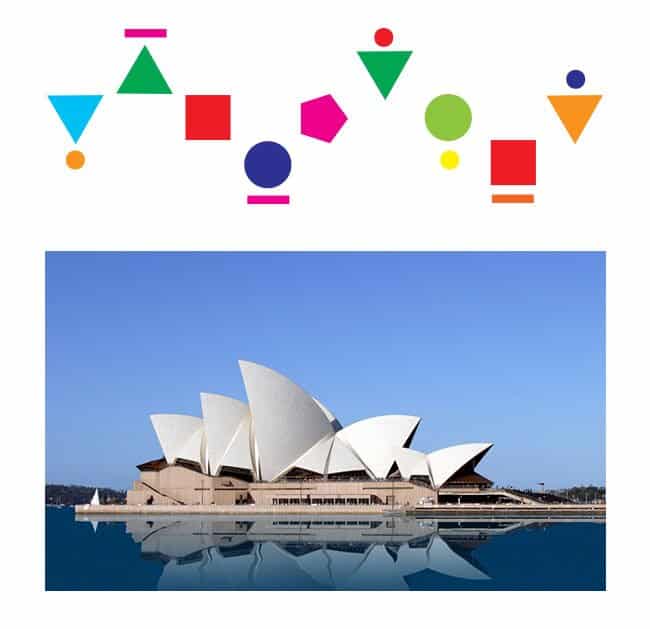Rhythm and Repetition in Art Explained: The Principles of Design & Pattern Repetition Variation
Table Of Content

This size manipulation draws the viewer’s eye where the artist wants attention. Random rhythm describes an artwork that contains repeating elements without a specified order or arrangement. Some random rhythm examples include splatters of paint or shells on a beach. When used properly, movement in design ultimately guides viewers through a composition to where the designer wants them to go.

1: Principles of Design- Rhythm and Pattern
Artists and creators make more powerful works when they utilize the principles of art. When viewers are familiar with the elements of art, they become more aware of the details and can better appreciate what they see and the message behind it. Connecting with art makes us more empathetic and strengthens the fabric of society. In the age of the internet, understanding how and why advertisers make design decisions can empower students with information and make them less susceptible to manipulation.
*Free Bundle of Art Appreciation Worksheets*
As designers, we can mimic nature by making wonderful patterns of elements with flowing rhythm. We can show clumps of seaweed underwater, their strands gently facing in a series of directions. The use of repeated design elements is a controversial topic in the creative industry. Learning the elements and principles of design is essential to becoming an exceptional artist or designer.
Rhythm in Art Examples
Dungannon bar may be knocked down to make way for retail units and 15 apartments - Belfast Live
Dungannon bar may be knocked down to make way for retail units and 15 apartments.
Posted: Wed, 24 Apr 2024 10:01:00 GMT [source]
Scale refers to the relative size of elements in a design, impacting its importance and focus. Manipulating scale can attract attention and indicate the hierarchy of information. With these techniques in mind, you can start experimenting with repetition in your art.
The repetition of organic, rhombus shaped ripples, appear to build and flow into the crashing wave. When we repeat the shapes, it creates a viewing path with more rhythm. The repeated shapes and colours cause the eyes to bounce back and forth between the elements. Larger shapes tend to stand out more, as do more complex shapes with more sides.
Scale
When paired with unity, variety offers the viewer points of interest. An artwork with radial balance is arranged around a central component. Forms and objects in a radially balanced composition appear to radiate out of the circular focal point of the artwork. An artwork with symmetrical balance is well-balanced and looks even and stable.
Easiest Online Businesses to Start: Your Ultimate Guide

Flowing rhythm is a type of rhythm in which the elements in an artwork are arranged in a way that creates a sense of movement and fluidity. This type of rhythm is often used to create a sense of movement or motion in a still image. One of Mondrian's most famous works, "Composition II in Red, Blue, and Yellow," exemplifies the use of regular rhythm.
These masterpieces showcase the artistic skill of the creators and prove that repetition is a technique that can stand the test of time. In this article, we will explore the principles of design and how they relate to the repetition and rhythm in art. Break it down into its individual elements and decide where the rhythm should be, or which element will lead to the next.
Contrast is a critical principle of design that enhances the distinctiveness of elements within a composition. It involves setting opposing elements against each other to emphasize differences and create visual interest. Contrast can be achieved through variations in color, size, shape, and texture. For example, pairing light and dark colors or combining large and small shapes.
You can also decide what kind of rhythm you want to create, whether it’s random or flowing. Alternation is when two or more different elements are rhythmically alternated to create a visual pattern. Renoir alternates the blue of the lake and the woman’s dress, with the bright red of the boats.
This pulls the viewer through the image, as if they were being taken on a journey. It can help to emphasise points within a composition, draw attention to certain details or add rhythm and life to what would otherwise be an unremarkable piece. For example, a painting with large complex shapes and bold, saturated colours of orange and reds can be quite overwhelming to look at. With so many visual elements trying to grab the viewer’s attention, the eyes will likely dart from subject to object at a fast pace.
Contrasting elements helps make the artwork visually interesting and engaging for viewers. It involves creating similar elements within a piece of artwork either in terms of their content or composition. For example, repeating the same shape or color throughout a piece will create an underlying structure and pattern which can help to guide viewers through the work.
Comments
Post a Comment